Angela Gulbenkian was on a tear. In the summer of 2017 the German-born art adviser spent $10,500 to charter a private jet; $3,920 at the Hotel Café Royal, in London’s Soho neighborhood; $16,985 at Harrods; and $2,610 at Agent Provocateur. She also made stops at Rolex, Gucci, and Christian Louboutin. Her spending wasn’t especially lavish by the standards of the circles she claimed to move in, but there was a problem: The money may not have been hers.
In a bizarre swindle that would wind through Europe and Asia and involve some of the most celebrated names in contemporary art, the Hong Kong–based art dealer Mathieu Ticolat claims that Gulbenkian duped him out of $1.4 million, and that the fortune she was spending was stolen.
In March 2017 Ticolat, who specializes in finding modern and contemporary art for collectors all over the world, was advising a client when another dealer suggested he speak with Gulbenkian. Ticolat was familiar with the family name—the Gulbenkians founded an eponymous museum in Lisbon and have been a fixture in European society for generations—but Angela was a stranger to him. Nevertheless, “a lot of people in the art world knew of her,” Ticolat says, “and never told me of any bad experiences.”
The two were introduced via WhatsApp. Ticolat was looking for art to buy, and Gulbenkian claimed to know of a sculpture for sale. The piece, a work by the Japanese artist Yayoi Kusama (who has been the subject of retrospectives at the Museum of Modern Art and the Tate Modern), was a hot commodity.
This particular sculpture was Yellow Pumpkin, from 2012. It was made of fiberglass and reinforced plastic, weighed 178 pounds, and, Gulbenkian explained, had been kept in a crate in a warehouse in Switzerland since being created. Was Ticolat interested? “It was attractive to buy a large yellow pumpkin at this price,” Ticolat says. “She had access to the work, which I verified, so I went for it.”
Gulbenkian was born Angela Maria Ischwang in Munich on February 17, 1982. As an adult she moved to London, where she married sports agent Duarte Gulbenkian, a great-grandnephew of Calouste Gulbenkian, the late British-Armenian multimillionaire who made a fortune selling oil concessions in the Ottoman Empire to European countries. He was also a prodigious art collector, amassing 6,000 works, most of which now belong to a foundation that bears his name in Lisbon.
Angela Gulbenkian was well spoken and beautiful, and she appeared to move easily among the one percent. She presented herself as an heir to one of the world’s great fortunes; Gulbenkian, the Times of London once wrote, “is one of the best-known philanthropic names, up there with Rothschild, Getty, and Tate.” It was this name that Angela began using when she entered the art business, in February 2016, launching a consultancy called FAPS-Net Limited.
According to a self-written entry on Medium, an online publishing platform, Gulbenkian is “one of the most well-known art collectors and entrepreneurs,” and though today she is only 38 years old, she has been “active in the arts and cultural space for the past 20 years.” According to this bio she facilitated thousands of shipments of art in “a transparent, ethical, and efficient manner.” It was a background people found easy to believe.
When the collector Marie Moatti met Gulbenkian at the Saatchi Gallery in London during an opening for artist Philip Colbert, she says, “we became friendly instantly.” Because Gulbenkian was standing with the famed auctioneer Simon de Pury, “she was sort of validated,” Moatti recalls. Moatti had visited the Gulbenkian Foundation in Lisbon and immediately recognized the name. “Because I knew the foundation, I just felt I could trust her.”
Others weren’t so sure. Indeed, many art world insiders claim never to have heard of Gulbenkian before the scandal. “I don’t think she was very active in the art market,” says Kenny Schachter, a collector as well as a friend and victim of art dealer Inigo Philbrick, who was recently indicted on charges of wire fraud and identity theft. “It would be hard to find people who had dealings with her. She was more of an upstart.” The London-based art critic and filmmaker Ben Lewis agrees, calling Gulbenkian a “hanger-on…trying to make a buck.”
Today the Gulbenkian Foundation is quick to distance itself. “Angela Gulbenkian does not have any relation whatsoever with the foundation and, as far as we know, is married to a Gulbenkian family member who is not a direct descendant of our founder,” a spokesperson told Bloomberg. Neither Gulbenkian, her lawyers, nor her husband responded to Town & Country’s requests for comment.
In April 2017 Ticolat and Gulbenkian settled on the sum of $1,375,000 for the pumpkin and signed a bill of sale. Soon Ticolat wired $100,000 to Gulbenkian’s HSBC account. He didn’t send the payment to an escrow account—which was not unusual, given the old-fashioned agreements the art world still relies on. Ticolat told me this choice was due to “the strong referral from a trusted friend, the need to act quickly, and the Gulbenkian Foundation’s reputation.”
On May 9 Ticolat wired the balance, $1,275,000. He expected the pumpkin to arrive in Hong Kong shortly and told his client as much. Ticolat asked Gulbenkian to restore minor scratches on the pumpkin before shipping it to Asia. “The conservator got paid, the report was done, and it was all good to go,” Ticolat says. But there were delays; issues arose with insurance, customs, and the building of the crate.
While Ticolat waited for the pumpkin, Gulbenkian traveled to Lugano, Sardinia, Lisbon, Venice, Ibiza, and the Greek islands. She also transferred money to her husband and her mother in Munich. Meanwhile, Ticolat grew increasingly distressed. On August 21 he texted, “The pumpkin belongs to me. I paid for it. I want access. I will not wait another day.” Six days later he texted again. “This is insane. This ridiculous situation has been dragging on for months. You are totally irresponsible.” Gulbenkian replied, “If you bother me, I am going to not correspond with you anymore.”
In October 2017 Ticolat flew to London for the Frieze Art Fair, and Gulbenkian suggested they meet at a restaurant in Belgravia. “She spoke very convincingly, sure of herself and what she was doing.” When Ticolat confronted her regarding the delay, Gulbenkian assured him that the work would be released the following week. She explained that the owner of the pumpkin, the head of Porsche, was a “family friend” and “very difficult.” He worried, she said, that the sculpture being sold to another dealer would reflect badly on him, as if he were reselling for a quick profit. Ticolat assured Gulbenkian this was not the case, and they agreed to sign a no-resale agreement. Ticolat flew back to Hong Kong feeling more assured, but when another week passed, he grew angry again. Their mutual animosity was reflected in the messages they began sending each other. “You are a liar,” Ticolat texted on December 14. “Fuck you,” came the reply.
Around then, a friend recommended that Ticolat speak to Chris Marinello, an artist turned lawyer, who founded Art Recovery International in 2013 and has since been dubbed “the Sherlock Holmes of Nazi-looted art.” Around Christmas, Ticolat briefed Marinello on what had transpired. “I haven’t met you,” Marinello told Ticolat. “But I am telling you, this is fraud.” Ticolat denied this assertion, but Marinello was adamant. “You don’t treat a customer that pays $1 million for a sculpture like garbage.”
On January 30, 2018, Marinello, acting on behalf of Ticolat, filed criminal complaints in the United Kingdom and Hong Kong. That June, Marinello heard from the attorney for Art Seen, the agent for the owner of the pumpkin. The pumpkin hadn’t belonged to the head of Porsche. Art Seen’s lawyer informed Marinello that when Gulbenkian failed to deliver the balance owed, they canceled the contract and sold the pumpkin to an anonymous buyer.
It was only then that Ticolat realized he’d been had. “I knew I had been scammed,” he says, and with the pumpkin gone his plan changed. The goal now was to do everything possible to “recoup the money,” Marinello says.
Fraud is not unusual in the $64 billion global art market. In 2020 Philbrick was charged with wire fraud and identity theft after bilking collectors and lenders out of nearly $20 million, and the FBI raided the Michigan property of painter Donald Henkel, who is suspected of running a forgery operation over a period of years. In 2018 a woman going by the name Anna Delvey made headlines for a scam that took in almost $200,000, money that was supposedly meant to build a Manhattan arts club. “Everyone has seen crazy prices, and criminals want a piece of that,” Marinello says. “There are more Philbricks, more Gulbenkians, more Delveys, holding themselves out as someone they are not.”
When Marinello contacted the Metropolitan Police in London, he was met with indifference, he tells me. “We have very few resources available to research art crimes,” Marinello recalls an officer telling him. On June 22, 2018, Marinello and Ticolat filed a criminal suit in the UK, and soon after that they filed a civil suit in Germany to recover $288,000 that Gulbenkian had wired to her mother. On July 27, 2018, a British judge froze what little remained of Gulbenkian’s assets (Marinello says, “It is believed that she is hiding her true assets”) and directed her to pay Ticolat back in full, plus legal fees and attendant court costs. Favorable judgment notwithstanding, Ticolat was still a man who was a pumpkin short and bereft of a million dollars.
Soon Marinello was getting calls from other victims looking for information. There was ArtCube, an online matchmaking service for sellers and buyers in the art world, which told Marinello it had been defrauded of $15,000. Gulbenkian’s former masseuse claimed she had entrusted $65,000 to Gulbenkian, money she has not seen again. An art dealer in New York and an interior design firm in London both claimed to have never been paid for work at her Battersea flat.
“Angela Gulbenkian was obsessed with the pumpkin sculpture by Kusama,” says Jane Morris of the Percy Bass interior design company. “She even had special wallpaper designed with large pink dots inspired by the pumpkin.” The company normally asks for a deposit before commencing work, but Gulbenkian explained that funds were coming directly from Lisbon and urged them to begin. “She pretended that the Gulbenkian Foundation in Portugal paid all her bills,” Morris says.
In February 2019 James Ashcroft, a London art dealer, was approached about buying Andy Warhol’s Queen Elizabeth II. The referral came from a friend who knew a seller named Florian Kappe and his associate, Angela Gulbenkian. By then the Gulbenkian name had been publicly associated with fraud, and Ashcroft was wary. “I am not dealing with that woman,” he told the friend, but he nevertheless agreed to look at the painting. Ashcroft examined it and liked what he saw. “It’s just the sort of picture I like to buy,” he says. “You can sell those every day.”
Ashcroft’s concerns were further assuaged by the fact that Kappe and Gulbenkian had a signed agreement stating that they were acting on behalf of the painting’s owner, the Frankfurt-based businessman Thomas Braun. In March 2019 Ashcroft agreed to wire $150,000 to Gulbenkian’s HSBC account. Just a few weeks after the sale, Ashcroft sold the painting for a profit.
Soon afterward, he received a letter from Braun informing him that Braun had never authorized the sale. Braun pursued Ashcroft in London court, and in March 2020 Ashcroft agreed to pay him back for the picture plus legal fees. Kappe has argued that the painting was meant for “viewing purposes only” and should not have been released to Ashcroft. In the following months Gulbenkian posted photos on Instagram from Art Basel, the Venice Biennale, and other locations around the world, posing with the likes of Ai Wei Wei, but in reality she was wading deeper into the legal morass. On April 13, 2019, a warrant was issued in the UK for Gulbenkian’s arrest, but she had already fled to her mother’s house in Germany.
When Marinello found out, he asked the German authorities to arrest her, but they were unable to, as there was not yet an extradition treaty in place between Germany and the UK. Eventually, a court hearing was set for May 14, 2020, in Britain. After a series of delays, Gulbenkian failed to appear at a second hearing, and a warrant was issued for her arrest.
In the meanwhile, Gulbenkian (whom ArtNet referred to as a “runaway art heiress”) had left Germany for Lisbon, and on June 16 she was arrested by the Portuguese authorities. A hearing in the German case was held in September; a decision is still pending. Gulbenkian was held in a women’s prison in Portugal before being extradited to the UK in December. Her trial is scheduled for early 2021.
“She lied, fabricated email correspondence, and faked bank transfers, but she also made real payment of deposit and restoration, and shipping costs,” Ticolat says. That was, in a way, her genius: What she said always had a basis in reality. She was indeed married to a Gulbenkian, and the business of shipping costly artworks is indeed fraught. Most crucially, perhaps, it turns out she did know something about art and its value. Three years after her million-dollar scam, the Kusama pumpkin Gulbenkian sold to Ticolat for $1.4 million has doubled in price.
This story originally appeared in the February issue of Town & Country.
This content is created and maintained by a third party, and imported onto this page to help users provide their email addresses. You may be able to find more information about this and similar content at piano.io

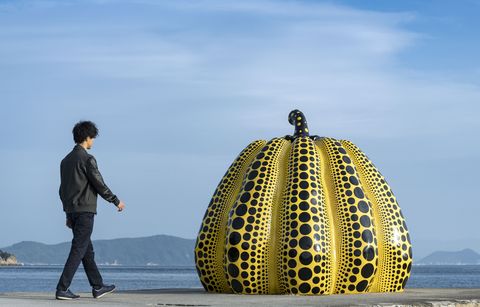

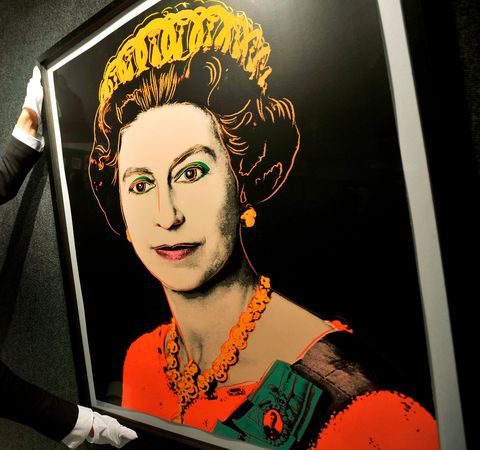
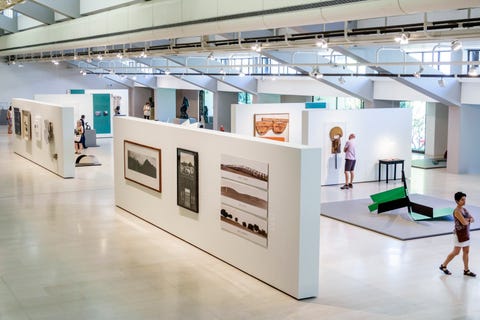
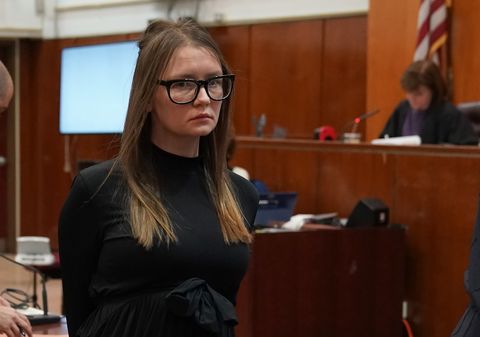
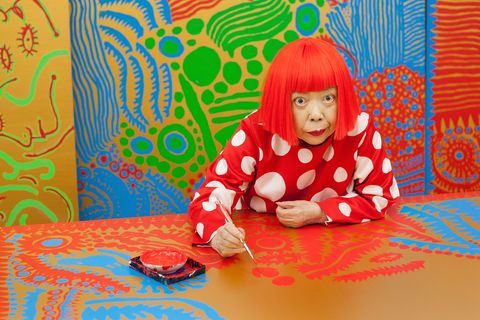
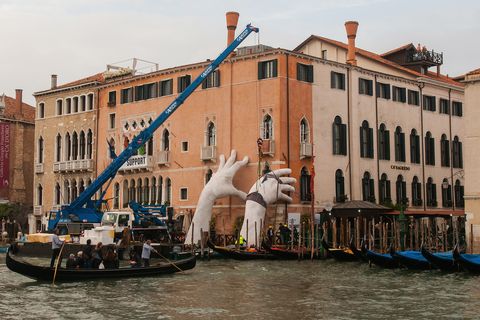

:strip_icc()/BHG_PTSN19720-33d9cd22f6ab49e6a21982e451321898.jpg)

More Stories
The Ultimate Suit Lining Style Refresh
Review of Jackson’s Curated Sets: Moku Hanga Printmaking
Gurney Journey: Midwinter Greetings